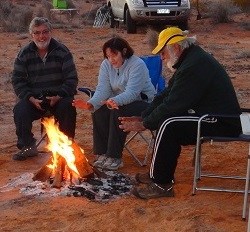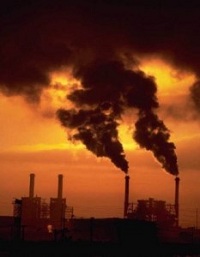Nothing is more emblematic of living during our Simpson Desert crossing than gathering around the camp fire at night. In memory we did it a half a dozen times. Actually it was only three out of our four nights as a group in the desert, plus once on the way over at Jervois Station and at Cooper’s Creek on the way home. Continue reading Red Centre Holiday: living was easy in the Simpson Desert
Monthly Archives: October 2014
Saturday salon 4/10

An open thread where, at your leisure, you can discuss anything you like, well, within reason and the Comments Policy. Include here news and views, plus any notable personal experiences from the week and the weekend.
For climate topics please use the most recent Climate clippings.
The gentleman in the image is Voltaire, who for a time graced the court of Frederick II of Prussia, known as Frederick the Great. King Fred loved to talk about the universe and everything at the end of a day’s work. He also used the salons of Berlin to get feedback in the development of public policy.
Fred would only talk in French; he regarded German as barbaric. Here we’ll use English.
The thread will be a stoush-free zone. The Comments Policy says:
The aim [of this site] is to provide a venue for people to contribute and to engage in a civil and respectful manner.
Here are a few bits and pieces that came to my attention last week.
Labor’s Kate Jones has thrown her hat into the ring to stand against Queensland Premier Campbell Newman at the state election.
The former environment minister will seek preselection in her former seat and the premier’s current seat of Ashgrove, in Brisbane.
ReachTEL have Jones on about 52%, Newman on 41% and TPP goes to Jones 56-44.
Dunno about ReachTEL, it was pretty erratic on individual seats before the last federal election.
In other shenanigans long-standing LNP member Dr Bruce Flegg has been given the flick by party bosses and will be prevented from recontesting Moggill. Flegg has now tipped a bucket on them, saying they have written Newman off in Ashgrove, and it’s about factional manoeuvring as to who will be the new leader.
2. GO8 warns on research funding
The Group of Eight universities have warned that the long-term shift away from basic research towards applied research could rob Australia of the fundamental knowledge base it needs to capitalise on new discoveries.
Back in 1992-93 basic research accounted for 28% of gross expenditure on research and development. In 2010-11 this had fallen to 21%.
Other countries are ramping up expenditure. South Korea, for example, is increasing research funding from 4% of GDP in 2011 to 5% in 2017. Europe is aiming at 3% of GDP.
Not sure of the number here, but if it’s $9 billion then it’s less than 1% of GDP. Our government’s strategy is to “massively” increase research funding by cutting grants and university funding, and ‘liberating’ universities to charge higher fees. And then of course there’s the 7% doctors visit co-payment.
3. Abbott to kill off Parliament House burqa ban
Abbott’s done something I approve of. Seems he’s killed off the parliamentary burqa ban.
Jacqui Lambie continues to embarrass herself.
Meanwhile Abbott:
“Frankly, I wish it was not worn. But we are a free country, we are a free society and it is not the business of Government to tell people what they should and shouldn’t wear,” he said.
Tanya Plibersek:
“I’d prefer if Tony Abbott didn’t get about in his Speedos either, but it’s a free country,” she said.
4. PUP gets its Senate inquiry into Queensland
The inquiry will be in the form of a select committee, chaired by Glenn Lazarus, consisting of five members but only one from the Coalition, has a reporting date on or before March 27 next year, very close to the date of the next Queensland election.
the committee will examine Queensland’s use of Commonwealth funds, the administration of the state’s judicial system, and questions around development and environmental approvals.
It’s hard to see how the administration of justice is the Commonwealth’s business. I’m with Nick Xenephon in thinking it’s inappropriate for one government in the federation to be inquiring into another. For Labor, presumably it’s payback, but politically probably not a good idea.
The world never really recovered from the GFC. Now:
Global debts have reached a record high despite efforts by governments to reduce public and private borrowing, according to a report that warns the “poisonous combination” of spiralling debts and low growth could trigger another crisis.
Modest falls in household debt in the UK and the rest of Europe have been offset by a credit binge in Asia that has pushed global private and public debt to a new high in the past year, according to the 16th annual Geneva report.
The total burden of world debt, excluding the financial sector, has risen from 180% of global output in 2008 to 212% last year, according to the report.
By Asia seems they mean China, mostly.
Climate mitigation costs and strategies
Val at fairgreenplanet perceived two contrasting approaches to climate mitigation at the recent Australian Climate Action Summit:
- technology can get us there, with a bit of political will
or
- we have to change the way we live, starting from the local level
In relation to the first she also cited a recent post by John Quiggin who cites four major reports, all making the same point:
decarbonizing the world economy will involve economic costs that are
(a) small; and
(b) far outweighed by the benefits
So that’s a net gain of considerable dimensions.
This is supported at the country level by a recent report in the UK:
if the UK cut its carbon emissions by 60 per cent from 1990 levels by 2030, as it has promised, its GDP would be 1.1 per cent bigger than if it stuck with fossil fuels, says a study by consultants at Cambridge Econometrics.
About half the gain would come from cheap running costs for fuel-efficient cars, with 190,000 new green jobs and higher wages also helping. The average household would be £565 a year better off.
The four reports cited by Quiggin are as follows:
First, there’s Pathways to Deep Decarbonization an international collaborative project under the auspices of the UN.
Second, the Better Growth Better Climate report from the Global Commission on the Economy and Climate
Third, this report on Green Growth from the Center for American Progress (covers the US only)
And, most strikingly, this report from staffers at the International Monetary Fund, long the guardian of fiscal rectitude has concluded that for most countries, the local side benefits of reducing pollution would be sufficient to offset the costs for carbon prices up to $50/tonne.
I find each report has limitations in its own way, so at the end I remain agnostic.
The fourth, the IMF study, looks at carbon pricing in the top 20 emitters. As far as I can make out it comes up with two propositions. First, each country can act on its own, with benefit, no-one has to wait for the world to act. Secondly, it identifies a sweet spot, which varies quite a lot from one country to the next, where net benefits accrue from carbon pricing. In Australia’s case it’s only $11.50 per tonne.
This is all very promising but is not as such a plan for climate stabilisation at safe levels.
The third, the American study, finds the aim of reducing emissions by 40% from 2005 levels by 2035 doable and beneficial. The problem here is in the task identification. The study assumes that the US should decarbonise at the same rate as the rest of the world. It ignores the ‘carbon budgeting approach’ whereby high per capita emitters need to decarbonise rapidly to make space for developing countries to grow their economies. See Figure 5 of this post on the IPCC report. The United States is a Group 1 country, which must decarbonise rapidly:
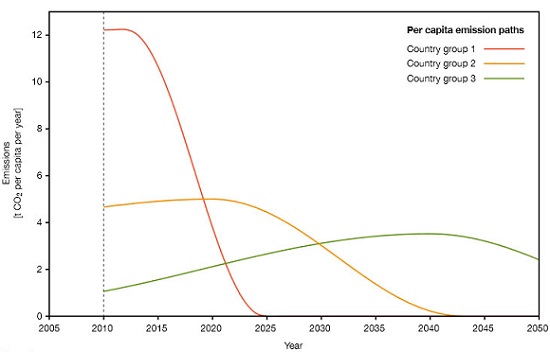
As we saw in this post, two thirds of increased emissions are now coming from emerging and less developed countries. In other words in reality increases from Group 2 and 3 countries are not being offset by cuts in Group 1 countries. Until we get our heads around this issue and address it we’ll stumble along on the road to perdition!
The problem facing Group 1 countries is impossible. The way around it lies in emissions trading between rich and poor countries, as per Figure 6 in that post. This would entail considerable wealth transfer, which could be mandated to be used in greening developing country economies.
Also 40% by 2035 overall is not a recipe for a safe climate, as shown below.
The first study, has two limitations. Firstly it simply does not address the issues of economic costs and social implications. Secondly, it simply accepts the stabilisation pathway for a 2°C temperature increase which sees zero worldwide emissions about 2070. In looking at the IPCC report (same as linked above), I developed this table to relate concentrations to temperature rise. RCPs are Representative Concentration Pathways (RCPs) which are expressed in terms of watts per square metre of radiative forcing (W m-2). Roughly, RCP2.6 represents the 2°C pathway, while RCP8.5 represents our present path.
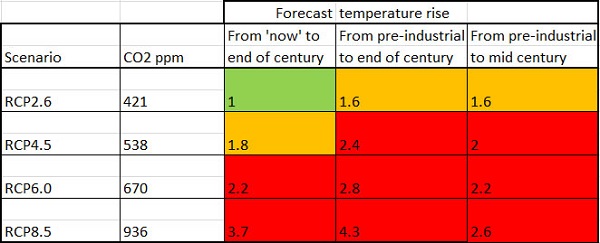
Green indicates a comparatively ‘safe’ climate, orange indicates the increasingly contested zone which clearly carries some danger, and red to indicate breaching the 2°C guardrail which everyone with half a brain accepts as dangerous.
Strictly speaking the green box should be orange, because it sits on top of ‘now’ which is an 0.6°C increase, and the orange box below it should be red, for the same reason.
On the orange zone, the Climate Change Authority in its Review published this wondrous graph, showing that they were well aware of the inadequacies of a 2°C target:
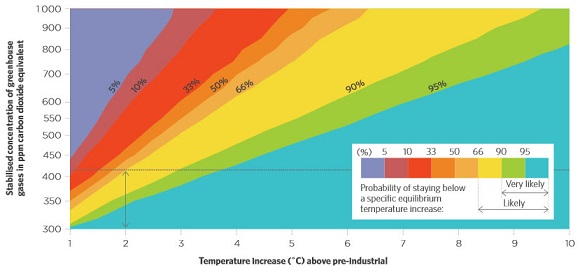
As I said then, in terms of CO2 equivalents we are now at 480. This gives us less than 33% chance of staying below 2°C and about a 10% chance of exceeding a civilisation threatening 4°C. These odds are unacceptable. We are already in an overshoot situation.
This is old information – very old. James Hansen told us at an American Physical Union meeting in December 2007 that we needed to aim for 350ppm in the first instance and then decide where we go from there.
The RCP2.6 path involves a 33% chance of ending up with more than 2°C, odds that should be completely unacceptable.
Turning to the third report, which specifically addresses the financial implications, it too is on 2°C path. The costs numbers when taken in isolation look large (US$45 trillion will be required in 2015–2030 for key categories of energy infrastructure), but in context are trivial:
costs of this magnitude look like “background noise” when compared with the strong underlying growth that the global economy is likely to experience.
These costs will go up if mitigation is delayed:
Costs are also likely to rise sharply with delay. If global action to reduce emissions is delayed until 2030, global CO2 emissions would have to decrease by 6-7% per year between 2030 and 2050 in order to have a reasonable chance of staying on a 2°C path. Such rates of reduction are unprecedented historically and are likely to be expensive (estimates of delay suggest an average annual consumption growth loss of around 0.3% in the decade 2030 to 2040, compared to a loss of less than 0.1% over the same period if we act now).
Fine, and perhaps not yet serious, but I’m afraid completely out of date. In 2011 the Climate Commission published this graph to illustrate the implications of delay:

Under the ‘climate budget approach’ the area under the line must remain constant.
That too would have been based on a 2°C target, but it illustrates that if we delay peaking emissions worldwide, even to 2020, we’ll be in completely uncharted territory.
Chapter Five of the third report gives enormous detail of the policy work that needs to be done. It may be summarised as strong leadership, consistent policy over decades, structural change and perhaps unprecedented international co-operation, even if we start now on a task that is eminently doable and inexpensive; so more than “a bit of political will” is required.
Frankly, our best hope lies in the prospect that solar technology with storage will simply become the cheapest form of new energy, and has the advantage that it doesn’t need a large grid. Nevertheless there will be residual problems – land use and agriculture, transport, ocean acidification etc. Zero emissions transport will require planning and subsidies.
One thing we should realise, however, is that further out our future will be energy rich, not energy-constrained. Saving energy is not a reason for localism and changing the way we live.
So where does that leave Val’s second option?
Firstly, concerted long-term action and international co-operation of the kind we need is not in our DNA. We are designed to co-operate in bands of up to 150 people, the number that our big brains can cope with in terms of knowing in any detail. We are told Fukuyama, Harari for example that bands were relatively egalitarian with a leader answerable to the people. Beyond that we can co-operate in amazing ways, but at the price of setting up hierarchies and privileges, coercive elites. This occurred in general with agriculture and owning stuff, even herds. These problems can be ameliorated in a modern democratic nation-state, with it’s formal mechanisms for election, administration, justice and accountability, but we are still apt to act in the self-interest of that larger entity.
What we need is an infusion of new values and ways of perceiving, thinking and feeling. While not sacrificing individualism we need to feel and act as social beings. We also need to revalue ourselves in relation to the biological and physical systems of the planet, so that we stop acting like the top rapacious predator, the one that has decimated the wild animal kingdom by 52% since 1970. Along the way, we need to challenge a Chain of Being, that sees elite mostly European males as next to the gods and women, children, other races, other social classes, slaves, asylum seekers etc in subordinate positions.
We need to live in nature, not over nature.
While localism and social participation are necessary, the required cultural and existential changes are hard work will happen over generations if at all. The planet can’t wait. That last reference tells us:
Efforts have been made to economically quantify the world’s “stock” of natural capital and the yearly “flow” of ecosystem services they provide. The latest numbers are $142.7 trillion and $48.7 trillion, respectively. By comparison, the flow of incomes through the global economy is currently about $71.8 trillion per year. The research suggests that by 2013 we were eliminating that stock of natural capital at a rate of about $7.3 trillion per year, and that the flow of ecosystem services would be $23 trillion higher if not for human practices like deforestation, burning fossil fuels, and the like.
And underneath all this, there is the point that these creatures and the ecologies they inhabitant have an intrinsic moral worth irrespective of the dollar sign that markets can place on them. “Wildlife is and should be useless in the same way art, music, poetry and even sports are useless,” author Richard Coniff recently wrote in the New York Times.
And the climate can’t wait.
We need hierarchies to get things done, a collective will not build a battleship, but we need to civilise them and render them accountable. We even need coercive powers, to counter the selfishness of states. The only supra-national entity that the major powers take notice of is the World Trade Organisation, not the UN. We need it to police international agreements, to oversee international carbon trading, and what Quiggin’s third report calls “border carbon adjustments”.
I never thought I’d say that!
The bottom line is that we must act if we want a future for our grandchildren, and cost, the only certain Armageddon is if we do nothing or not enough. We are heading into uncharted territory but indications are that there will be benefits and the net costs are unlikely to be as bad as pessimists might think. We just don’t know. And the groupie, local stuff, well there are reasons for doing that, but it won’t solve climate change as such.
Abbott’s Cambodia solution
Australia has signed an agreement to resettle refugees held in Nauru to Cambodia.
It may be Abbott’s but it is not a solution. The numbers will be negligible.
Cambodia’s Interior Ministry spokesman Khieu Sopheak said his country wants to take far fewer refugees than expected after an initial pilot program that could involve only a handful of people.
“It would be 20 or 10 or 50 or 100 or something like this. Not 1000 as people have said,” Mr Khieu Sopheak told the Phnom Penh Post.
Only people willing to go will be shipped to Cambodia.
Long Visalo, secretary of state at Cambodia’s foreign ministry, told journalists that before refugees slated for resettlement on the Pacific island of Nauru are selected, Cambodian officials will go there to brief them on the country’s difficulties and traditions.
Cambodia is one of the world’s poorest nations.
“We will explain to them about Cambodia … the country is like this or this, a lecture for them and then they will decide if they want to come or not,” he said.
Cambodia certainly is poor ranking 183rd in the world in terms of per capita GDP. While a signatory to the UN convention Cambodia currently hosts only 70 refugees and 20 asylum-seekers. It has not always been exemplary in the treatment of its own minorities.
Immigration Minister Scott Morrison told RN’s AM that four or five would be resettled at first. It seems altogether possible that volunteers will be found given the horrific stories coming out of the Nauru detention centre:
Greens senator Sarah Hanson-Young said women inside the centre were regularly required to strip and exchange sexual favours with guards so they could have access to the showers.
She said there were also allegations children had been forced to have sex in front of guards at the centre.
The UNHCR is not happy. They are deeply concerned at the precedent set by the Cambodian agreement:
“This is a worrying departure from international norms. We are seeing record forced displacement globally, with 87 per cent of refugees now being hosted in developing countries. It’s crucial that countries do not shift their refugee responsibilities elsewhere,” said UN High Commissioner for Refugees António Guterres. “International responsibility sharing is the basis on which the whole global refugee system works. I hope that the Australian government will reconsider its approach.”
UNHCR has consistently advocated for asylum-seekers to have their claims assessed and to benefit from protection in the territory of the State where they arrive, or which has jurisdiction over them.
“Refugees are persons who are fleeing persecution or the life-threatening effects of armed conflict. They are entitled to better treatment than being shipped from one country to the next,” Guterres added.
Meanwhile the UNHCR has identified some 3.2 million Syrian persons of concern. The 7.30 Report paints an even gloomier picture:
It’s over 6 million who are internally displaced, approaching to 7 million people, and over 3 million who have fled over the borders – and, of course, these are known numbers. There’s always some leeway with this but we know of at least that many people. So it’s a severe humanitarian crisis.
The UNHCR are looking for another $1.8 billion to deal with the Syrian refugee problem. Abbott might give a damn if he’s honestly concerned about humanitarian issues.

